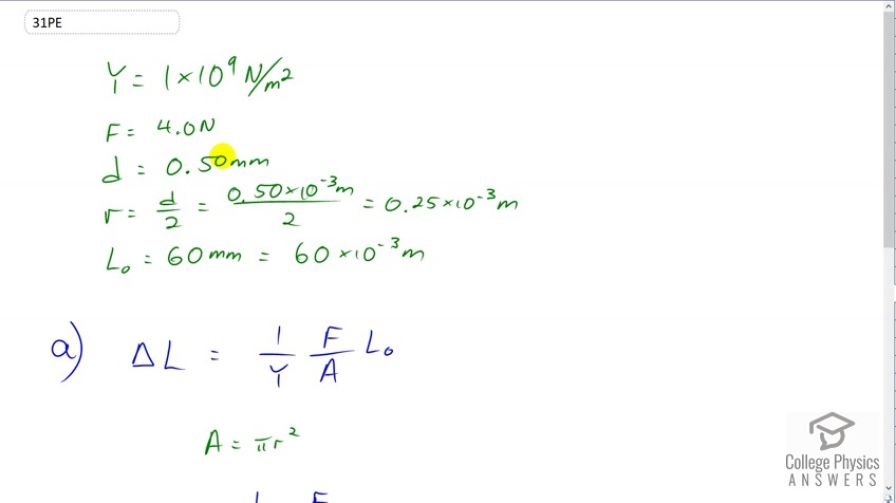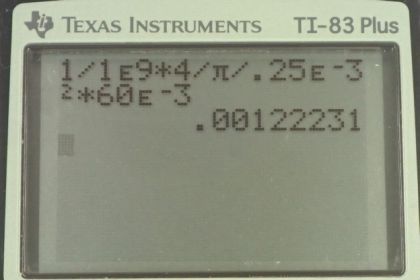Question
(a) The “lead” in pencils is a graphite composition with a Young's modulus of about . Calculate the change in length of the lead in an automatic pencil if you tap it straight into the pencil with a force of 4.0 N. The lead is 0.50 mm in diameter and 60 mm long. (b) Is the answer reasonable? That is, does it seem to be consistent with what you have observed when using pencils?
Final Answer
Solution video
OpenStax College Physics, Chapter 5, Problem 31 (Problems & Exercises)

vote with a rating of
votes with an average rating of
.
Calculator Screenshots
Video Transcript
This is College Physics Answers with Shaun Dychko. Since these questions on stress and strain have a lot of data in them, it's extra important to write down all the data at the beginning of the question. So the Young's Modulus for pencil lead is one times ten the nine newtons per meter and the force applied to the lead is 4.0 newtons, the diameter is 0.5 millimeters but we're going to need radius in our work because the cross sectional area of the lead will be pi times radius squared. So let's divide that diameter by two, also convert its units into meters. So 0.5 times ten to the minus three meters divided by two gives 0.25 times ten to the minus three meters radius. The original length is 60 millimeters which is 60 times ten to the minus three meters. So the change in length of the lead is one over the Young's Modulus of lead, times the force applied, divided by its cross sectional area, times its original length. So area being pi r squared, we can substitute that in for a here, and then plug in numbers. So we have one over one times ten to the nine newtons per square meter, Young's Modulus for lead, times four newtons applied, divided by pi times 0.25 time ten to the minus three meters radius squared, times 60 times ten to the minus three meters, original length, and this gives about 1.2 millimeters of compression of the lead. That's probably reasonable since lead seems to be quite flexible so it would make sense that it could be compressible that much.
Comments
Good solution
How come when I put the equation '0.50x10^-3/2' it gives me 2.5x10^4? Your solution is showing the result as 0.25x10^3. Am I missing something?
I agree with your calculator. The two figures are the same quantities, expressed differently. If you try subtracting one from the other you'll find the answer is zero, as expected for numbers that are the same quantities. The 0.25x10^3 is something I just did in my head rather than using a calculator.
I do not know how to work my calculator fx-991ex



